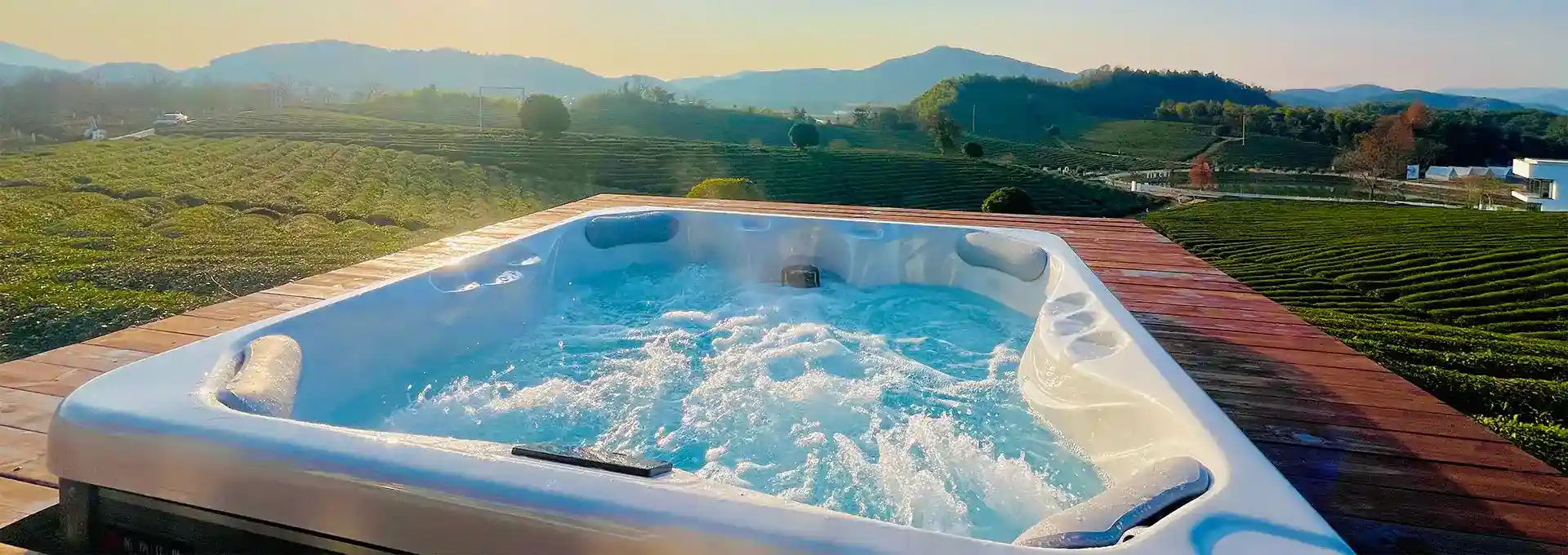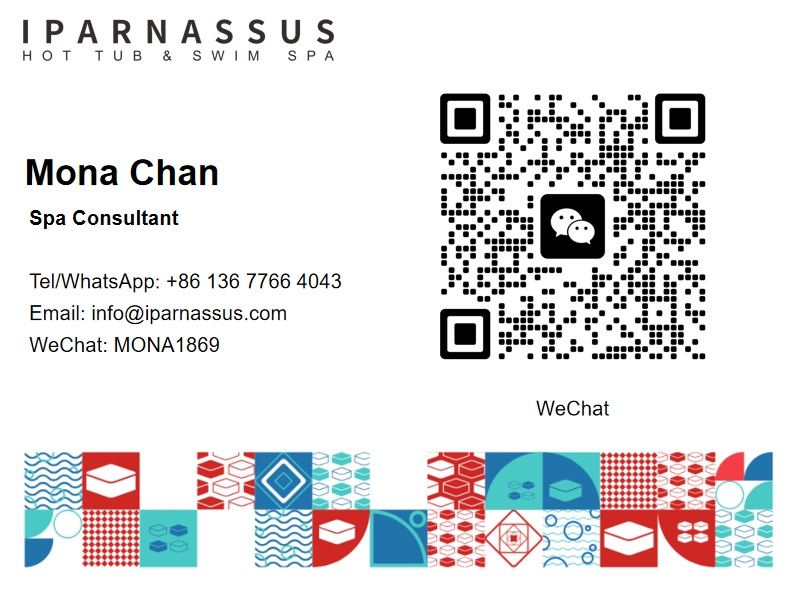How to Increase pH in Hot Tub?
2024-08-27 16:54:57
Maintaining the proper pH level in your hot tub is crucial for ensuring a safe and enjoyable soaking experience. The pH scale ranges from 0 to 14, with 7 being neutral. For hot tubs, the ideal pH range is between 7.2 and 7.8. When the pH level drops below this range, the water becomes acidic, which can cause various issues such as skin and eye irritation, corrosion of equipment, and reduced effectiveness of sanitizers. In this blog post, we'll explore ways to increase the pH in your 4 person hot tub and address some related questions about hot tub maintenance and usage.
What is the best 4 person hot tub for small spaces?
When it comes to choosing the best 4 person hot tub for small spaces, several factors need to be considered. The size of the hot tub, its features, energy efficiency, and overall design all play crucial roles in determining the ideal option for your limited space.
One of the top choices for small spaces is the Lifesmart LS100DX 4-Person 20-Jet Plug and Play Hot Tub. This compact hot tub measures 70 x 61 x 32 inches, making it perfect for tight corners or small patios. Despite its small footprint, it doesn't compromise on features. The LS100DX comes with 20 hydrotherapy jets, multicolor underwater LED lighting, and a digital control panel for easy temperature and jet control.
Another excellent option is the Essential Hot Tubs SS125210300 Devotion-24 Jet Hot Tub. With dimensions of 80 x 68 x 32 inches, it's slightly larger than the Lifesmart model but still compact enough for most small spaces. This hot tub features 24 stainless steel jets, a programmable digital control system, and a durable, weather-resistant cabinet.
For those looking for a more budget-friendly option, the Coleman SaluSpa Inflatable Hot Tub is worth considering. While not as durable as hard-shell models, this inflatable hot tub is incredibly portable and easy to set up. It measures 71 x 71 x 28 inches when inflated and can be easily deflated and stored when not in use, making it ideal for those with very limited space.
When choosing a 4 person hot tub for small spaces, it's essential to measure your available area carefully. Consider not just the dimensions of the hot tub itself, but also the space needed for access, maintenance, and any additional equipment like steps or covers. Energy efficiency is another crucial factor, especially in small spaces where utility costs can be a concern. Look for models with good insulation and energy-saving features like programmable heating cycles.
Additionally, consider the placement of jets and seating arrangements. In a smaller hot tub, efficient design is key to ensuring comfort for all four users. Some models offer different seating depths or lounger seats, which can enhance the soaking experience even in a compact space.
Lastly, don't forget about maintenance requirements. Smaller hot tubs can be easier to clean and maintain, but it's still important to choose a model with easily accessible filters and a user-friendly control system. This will help ensure that your compact hot tub remains a source of relaxation rather than a maintenance headache.
How often should you change water in a 4 person hot tub?
The frequency of water changes in a 4 person hot tub depends on several factors, including usage, water quality, and maintenance practices. However, as a general rule, it's recommended to change the water in a 4 person hot tub every 3 to 4 months.
Regular water changes are crucial for maintaining a clean and safe hot tub environment. Over time, water can accumulate dissolved solids, chemicals, and organic matter that can't be filtered out or neutralized by standard water treatment methods. This buildup can lead to poor water quality, unpleasant odors, and potential health risks.
The frequency of use is a significant factor in determining how often you should change the water. If your hot tub is used daily by multiple people, you might need to change the water more frequently, perhaps every 2 to 3 months. On the other hand, if the hot tub is used less frequently or primarily by one or two people, you might be able to extend the time between water changes to 4 or even 5 months.
Water quality also plays a role in determining the change frequency. If you're diligent about maintaining proper chemical balance, regularly cleaning the filters, and using a hot tub cover to prevent debris from entering the water, you may be able to go longer between changes. However, if you notice persistent cloudiness, foaming, or unusual odors despite proper maintenance, it might be time for a water change regardless of the time elapsed since the last one.
It's important to note that changing the water in your hot tub isn't just about draining and refilling. It's also an opportunity to perform a deep clean of the tub itself. When you drain the water, take the time to clean the shell, jets, and any hard-to-reach areas. This helps prevent biofilm buildup and ensures that your fresh water starts off as clean as possible.
To make the most of your water and potentially extend the time between changes, consider implementing the following practices:
1. Shower before using the hot tub to reduce the amount of oils, lotions, and other contaminants introduced to the water.
2. Use tennis balls or specially designed sponges to absorb oils and lotions that do make it into the water.
3. Clean your filters regularly, typically every 2-4 weeks depending on usage.
4. Maintain proper chemical balance by testing the water frequently and adjusting as needed.
5. Use enzyme products designed to break down organic contaminants in hot tub water.
Remember, while these guidelines provide a general framework, the best approach is to monitor your hot tub's condition closely and be prepared to change the water when needed, even if it's sooner than the recommended 3-4 month interval. By staying attentive to your hot tub's needs, you can ensure a clean, safe, and enjoyable experience for all users.
What temperature should a hot tub be for relaxation?
The ideal temperature for a 4 person hot tub can vary depending on personal preference and the intended use, but for relaxation purposes, most people find a temperature range of 100°F to 102°F (37.8°C to 38.9°C) to be most comfortable and conducive to relaxation.
It's important to note that the maximum recommended temperature for a hot tub is 104°F (40°C). Temperatures above this can pose health risks, especially for prolonged soaking sessions. The U.S. Consumer Product Safety Commission advises against exceeding this temperature to prevent the risk of hyperthermia, which can occur when the body's internal temperature rises to dangerous levels.
When setting your hot tub temperature for relaxation, consider the following factors:
1. Personal Comfort: Some people prefer slightly cooler temperatures, while others enjoy higher heat. Start at 100°F and adjust up or down based on your comfort level.
2. Outdoor Temperature: In colder weather, you might prefer a slightly higher temperature to contrast with the cool air. Conversely, in hot weather, a slightly lower temperature can be more refreshing.
3. Duration of Use: If you plan on soaking for extended periods, a slightly lower temperature (around 98°F to 100°F) can be more comfortable and reduce the risk of overheating.
4. Health Considerations: If you have any health conditions or are pregnant, consult with your doctor about safe hot tub temperatures. Generally, a lower temperature is recommended for these individuals.
5. Energy Efficiency: Keep in mind that higher temperatures require more energy to maintain. Setting your hot tub a degree or two lower can result in significant energy savings over time.
6. Time of Day: Some people prefer slightly cooler temperatures for daytime use and warmer temperatures for evening relaxation.
To maximize the relaxation benefits of your hot tub, consider these additional tips:
1. Hydration: Always stay well-hydrated when using a hot tub. The heat can cause you to sweat and lose fluids more quickly than you might realize.
2. Aromatherapy: Use hot tub-safe essential oils or aromatherapy products to enhance relaxation. Lavender, chamomile, and eucalyptus are popular choices for promoting calmness.
3. Lighting: Soft, ambient lighting can greatly enhance the relaxation experience. Many modern hot tubs come with built-in LED lighting systems that allow you to set the perfect mood.
4. Sound: Consider adding waterproof speakers to play soothing music or nature sounds. Alternatively, enjoy the natural sounds around you if you have an outdoor hot tub.
5. Jet Placement: Experiment with different seating positions to find the jet configurations that best target areas of tension in your body.
6. Timing: For maximum relaxation, try using your hot tub about an hour before bedtime. The drop in body temperature after you exit the tub can help promote better sleep.
7. Stretching: Gentle stretching in the hot tub can help relax muscles and increase flexibility. The warm water helps loosen tight muscles, making stretching more effective and comfortable.
Remember, while the temperature is an important factor in creating a relaxing hot tub experience, it's just one part of the equation. The overall ambiance, your state of mind, and how you use the 4 person hot tub all contribute to the relaxation benefits you can derive from it.
By finding the right temperature for your needs and preferences, and creating an environment conducive to relaxation, you can transform your hot tub sessions into deeply rejuvenating experiences that help you unwind, de-stress, and promote overall well-being.
For more information on hot tub installations and to find out more about our products, please feel free to contact us at info@iparnassus.com.
References:
1. U.S. Consumer Product Safety Commission. "Safety Barrier Guidelines for Residential Pools."
2. Association of Pool & Spa Professionals. "Standard for Portable Electric Spas."
3. Energy.gov. "Energy-Efficient Home Design."
4. Centers for Disease Control and Prevention. "Healthy Swimming/Recreational Water."
5. National Swimming Pool Foundation. "Pool & Hot Tub Alliance."
6. American Red Cross. "Home Pool Essentials."
7. Environmental Protection Agency. "Healthy Pools."
8. Hot Tub Works. "Hot Tub Water Care Guide."
9. Swim University. "Hot Tub Maintenance."
10. Spa Depot. "Hot Tub Buyer's Guide."



